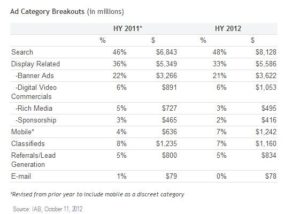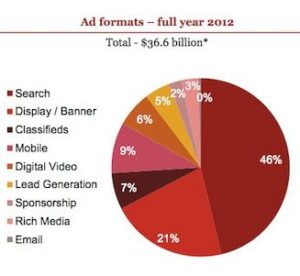
Recently, Google announced that mobile search traffic had overtaken desktop search traffic in the United States. Since then, Google has been tight-lipped on how much those number have changed. But two new reports suggest that nearly 6 out of every 10 searches now take place on mobile devices. The battle between desktop and mobile continues to take place.
These reports offer key insights and data regarding mobile vs. desktop search. Researchers found that mobile’s shares of search traffic varies significantly across different categories. They also found big discrepancies in the search results that Google returns when searches are made on different types of devices.
Smartphones & Tablets Dominating Search
The share of mobile search traffic reported in both studies was remarkably similar. The first report, which measured overall search traffic, found that 57% of searches originated from mobile devices. The second, which measured search traffic across 11 different categories, found that mobile devices accounted for 58% of search traffic on average.
Both reports used numbers pulled from analytics software for business, so these figures could be more representative of consumer behavior than overall search traffic. But from a marketing perspective, that actually makes these figures more valuable for brands and businesses.
The reports offered other key data points. In the first report, researchers found significant fluctuations in Google search results between mobile and desktop devices.
Over 79% of all search results had a different search ranking on different devices. This variance was less pronounced among top results, but still significant. 49% of top-20 search results had their rankings change from one device to another, and 35% of first-ranked pages lost their #1 ranking.
In the second report, the percentage of mobile searches varied widely between categories. Food and beverage (72%), health (68%), and sports (68%) had the highest shares of mobile traffic. Out of eleven categories, only three had less than 50% of their traffic from mobile devices: real estate (48%), entertainment (42%), and banking (39%).
The variance in percentages was even more extreme when researchers looked at different types of searches within each category. For instance, the percentage of mobile searches in the travel category (52% overall) went through the roof for queries about wait times (93%) but was far lower for queries about exchange rates (34%).
Takeaways for Mobile Search Marketing
The data in these reports offer a number of key takeaways for businesses and search marketing professionals.
• While the share of search traffic by mobile devices has grown in the past 2.5 years, that growth is slower than many predicted.
• Brands should think in terms of mobile SEO or desktop SEO, depending on which device they’re targeting. Rankings change between devices based on a number of factors, including page length, style of language, use of images/video, where key information appears, and — most important — how user behavior on the page changes from mobile to desktop.
• Even though mobile traffic is now 140% the size of desktop traffic, a mobile-first strategy isn’t best for all businesses — just most. A desktop-first strategy might still be your best bet, depending on the type of business you operate.
• Device targeting needs to be adaptive and flexible. How you target consumers and which devices you target will be different for different search terms, different products or services, different stages in the sales process, and different types of customers.


